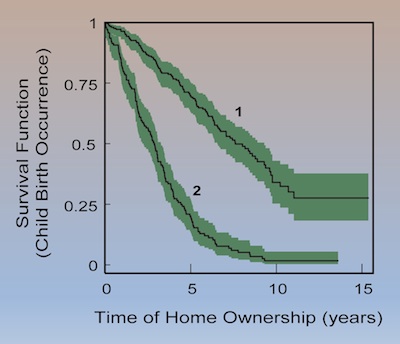Survival analysis is a colloquial term including several statistical methods for consideration of survival events occurring at different moments in time. The survival events could be anything including death, occurrence or recurrence of a disease, childbirth, buying or selling property, marriage, divorce, etc. Survival analysis allows calculation of survival rates and hazard. Hazard is the probability that the survival event will occur, per unit of time, after the subject survives a particular time interval without the event. This probability as a function of time is called the hazard function.
 It is typically important to understand and characterise any relationships between survival time (i.e., the time to the event occurring) and any other variables or factors influencing the survival process. For example, these factors and variables could include treatments and interventions, age, gender, social status, etc. This type of survival analysis can be conducted using the Cox (or proportional hazard) regression, or parametric survival analysis with different time distributions of the hazard. It also allows predicting the median and mean survival times, including their confidence intervals and as functions of other variables and factors.
It is typically important to understand and characterise any relationships between survival time (i.e., the time to the event occurring) and any other variables or factors influencing the survival process. For example, these factors and variables could include treatments and interventions, age, gender, social status, etc. This type of survival analysis can be conducted using the Cox (or proportional hazard) regression, or parametric survival analysis with different time distributions of the hazard. It also allows predicting the median and mean survival times, including their confidence intervals and as functions of other variables and factors.
Survival analysis can be used in a variety of fields and circumstances, and it normally does not require an assumption of any particular 'survival model'.
Cox regression can also be used in the circumstances where additional events changing conditions of the experiment can occur randomly prior to the occurrence of the survival event. This happens, for example, if we are interested in the dependence of childbirth occurrence as a function of home ownership that occurs randomly (for different study participants) over the course of the study. In this case, Cox regression with the 'episode splitting' approach must typically be used.
Our team has extensive expertise and experience with different types of survival analysis including with the 'episode splitting' approach.

